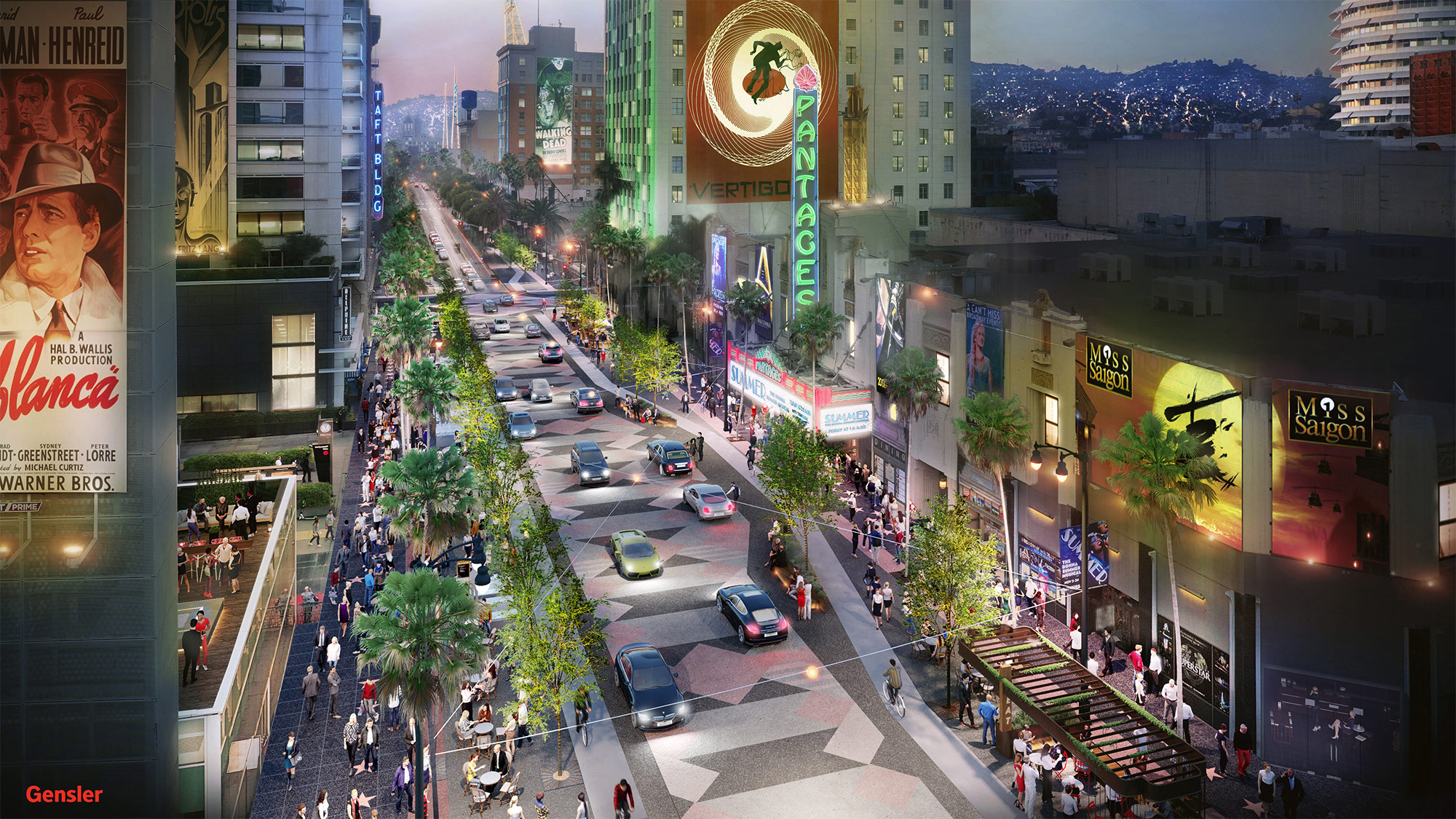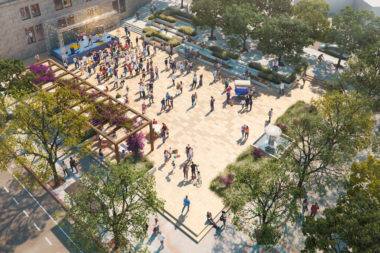By J.T. Theeuwes and Li Wen
Scientific studies back up what many already feel is true: our mental and physical health is inextricably linked to the connections between ourselves and the natural world, as well as social connections between individuals. This happens much more often when urban space is designed (and designed well) to prioritize people over vehicles.
The Overloaded Mind
Access to nature in the form of parks and landscaped green spaces along our plazas and sidewalks reduces stress and depression, promotes positive emotions, helps recover from mental fatigue and facilitates cognitive functioning. Children with Attention Deficit Disorder (ADD) have reduced symptoms when activities are provided in ‘green’ settings. Dementia patients have been shown to reduce negative behaviors when given access to garden environments. And a widely cited study shows hospital patients healing faster in rooms that provided a view of nature.
Our cities, while exciting in their cacophony of interesting sights and sounds, require direct attention to a multitude of constantly changing micro-tasks. Everything from watching for crossing signals to dodging construction sites to acknowledging a stranger walking towards you on the sidewalk – all these things can contribute to mental fatigue. On the other hand, access to parks, landscaped plazas, and pedestrian-oriented sidewalks can provide the relief for the overloaded mind.
Interaction Not Isolation
Psychology Today notes that people who enjoy strong relationships have fewer health problems and live longer. Meanwhile, isolation has shown to be a bigger risk factor for death than smoking or obesity. It has also been shown that these relationships need to be face-to-face interactions, not simply phone calls, emailing and texting, to be beneficial in helping to stave off health issues such as depression.
Public places are instrumental in creating community. Town squares, plazas, and pedestrian-friendly ‘main streets’ have long been and will continue to be the places where friends catch up with each other, the local news is heard, and gossip relayed. These public spaces are the locations of our celebrations as well as our protests.
When done well and positively connected to the public realm, privately owned public spaces (POPs) also help in creating these healthy places. While it is hard to quantify the mental and social advantages of well-designed public spaces, town leaders should keep in mind — and even advocate for — the intangible benefits these spaces can have for the people in their communities.
Sound Body
It’s a fact that physical exercise provides many health benefits and will increase the length and quality of your lifespan. And studies have also shown that simply providing access to park space leads people in the nearby community to exercise more.
In Los Angeles, more than 2.6 million people live too far from park space — considered more than a 10-minute walk. Low density and vehicle-dominant streetscapes discourage walking and biking for running errands, getting to school and work, and even for simple leisure. People-oriented streetscapes and greenways promote these activities and lead to healthier lifestyles. Park spaces give children opportunities for outdoor play, which aids in both physical and mental growth. Physically healthy cities are cities designed around people.

Natural spaces: Adding to our urban tree canopy and landscaping not only reduces local temperatures and cleans our air and water but also has all the health benefits mentioned above. The leaves and bark of trees have even been shown to reduce the noise pollution found in the city. For the Hollywood Walk of Fame master plan, we have not only added to the existing ornamental fan palms lining Hollywood Blvd, but we have also designed a new row of shade trees that will provide more comfort to the pedestrians along the street while reducing the urban heat island effect.
In an ever-virtuous circle, positive physical health has been shown to contribute to positive mental health. And positive mental health has been shown to contribute to a person’s overall physical health. A key to creating successful places like these within our cities and towns will be to keep advocating for the types of space we have always enjoyed being part of and have helped us in creating our happiest memories. When a city’s populace and leaders view abundant and well-designed park spaces, public plazas and streetscapes as integral as other infrastructure to creating a livable community, it benefits the health and well-being of everybody.
Contact: Gensler
About ARCHEN news
ARCHEN news is a digital media platform for the AEC | MEP | HVAC community.
Interesting project or product? Send for consideration.
contact@archennews.com or (646) 494-5102


